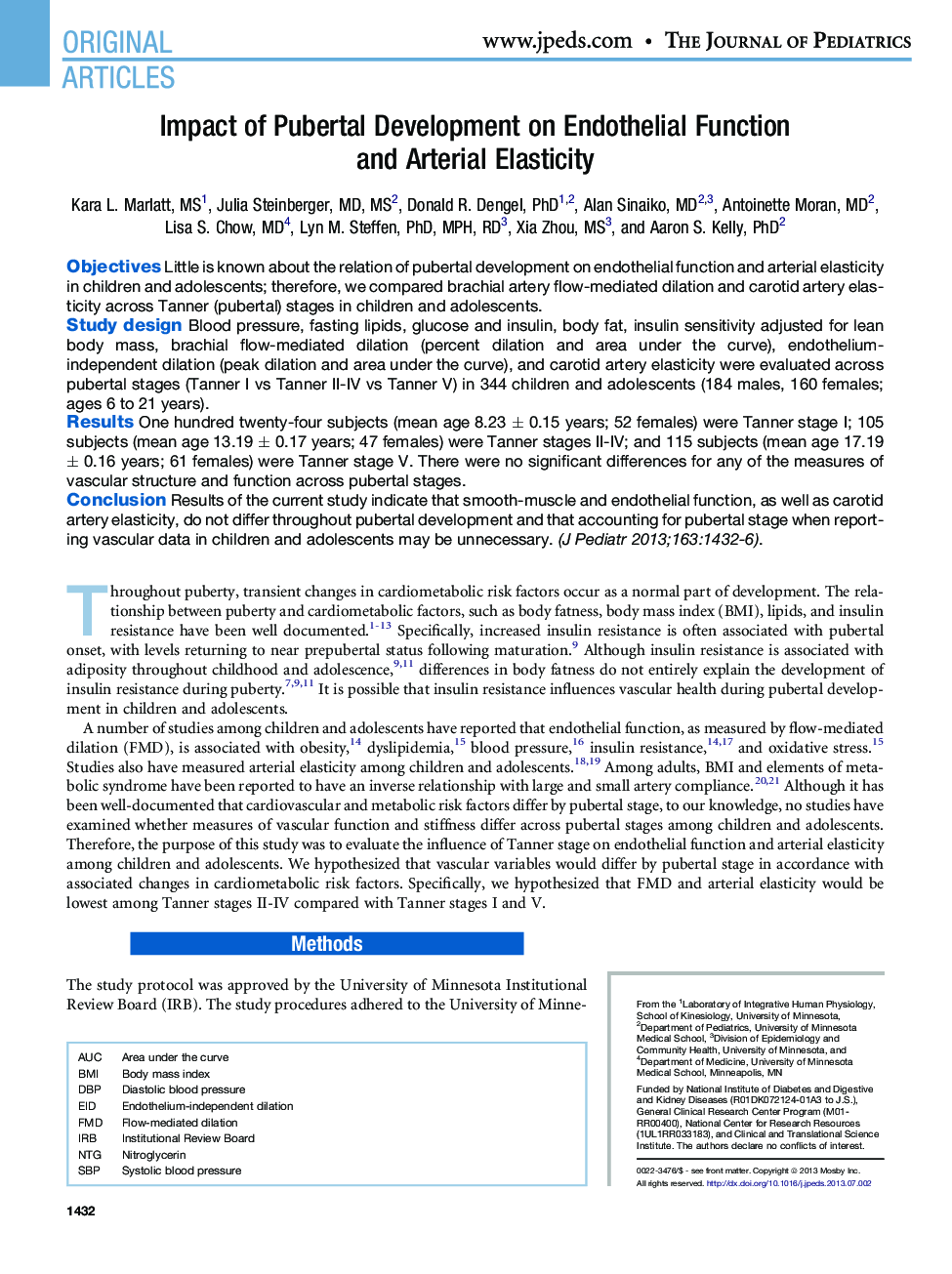| Article ID | Journal | Published Year | Pages | File Type |
|---|---|---|---|---|
| 6223307 | The Journal of Pediatrics | 2013 | 5 Pages |
ObjectivesLittle is known about the relation of pubertal development on endothelial function and arterial elasticity in children and adolescents; therefore, we compared brachial artery flow-mediated dilation and carotid artery elasticity across Tanner (pubertal) stages in children and adolescents.Study designBlood pressure, fasting lipids, glucose and insulin, body fat, insulin sensitivity adjusted for lean body mass, brachial flow-mediated dilation (percent dilation and area under the curve), endothelium-independent dilation (peak dilation and area under the curve), and carotid artery elasticity were evaluated across pubertal stages (Tanner I vs Tanner II-IV vs Tanner V) in 344 children and adolescents (184 males, 160 females; ages 6 to 21 years).ResultsOne hundred twenty-four subjects (mean age 8.23 ± 0.15 years; 52 females) were Tanner stage I; 105 subjects (mean age 13.19 ± 0.17 years; 47 females) were Tanner stages II-IV; and 115 subjects (mean age 17.19 ± 0.16 years; 61 females) were Tanner stage V. There were no significant differences for any of the measures of vascular structure and function across pubertal stages.ConclusionResults of the current study indicate that smooth-muscle and endothelial function, as well as carotid artery elasticity, do not differ throughout pubertal development and that accounting for pubertal stage when reporting vascular data in children and adolescents may be unnecessary.
